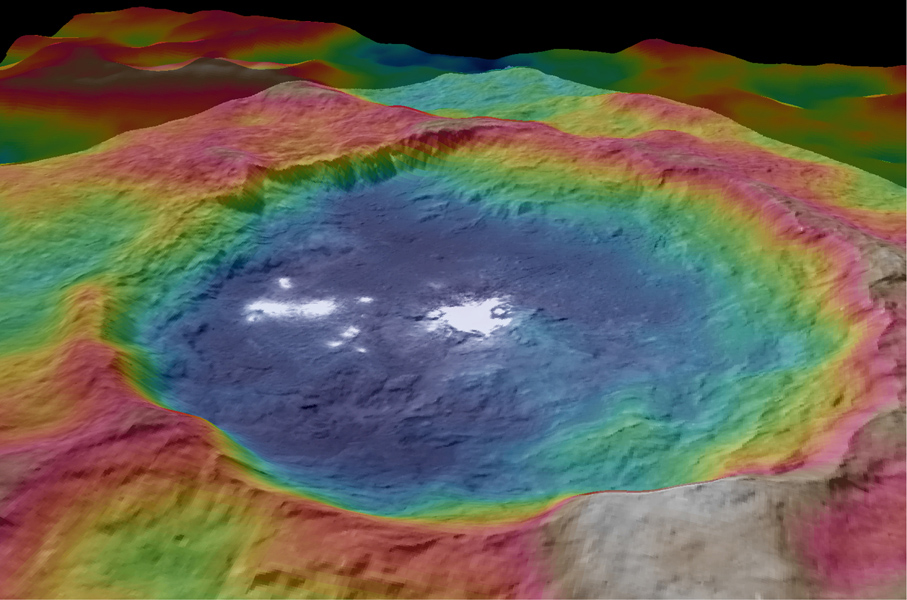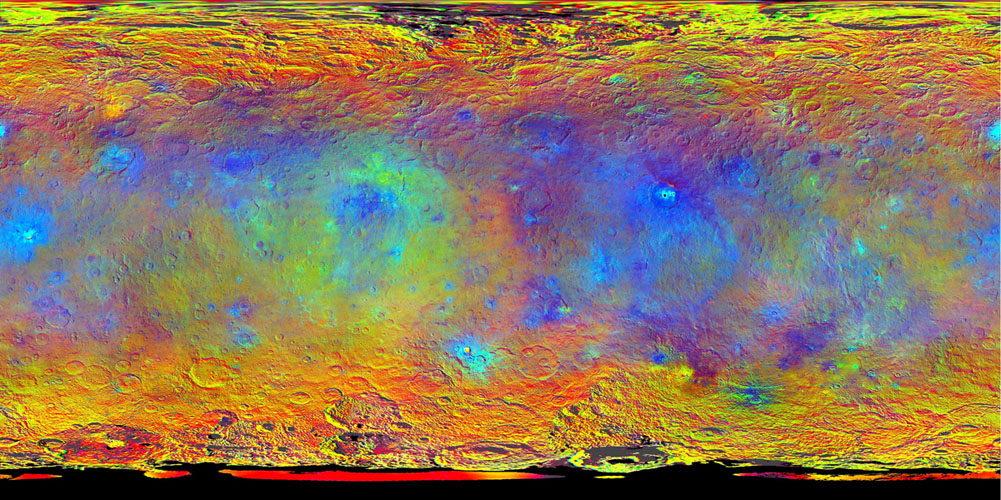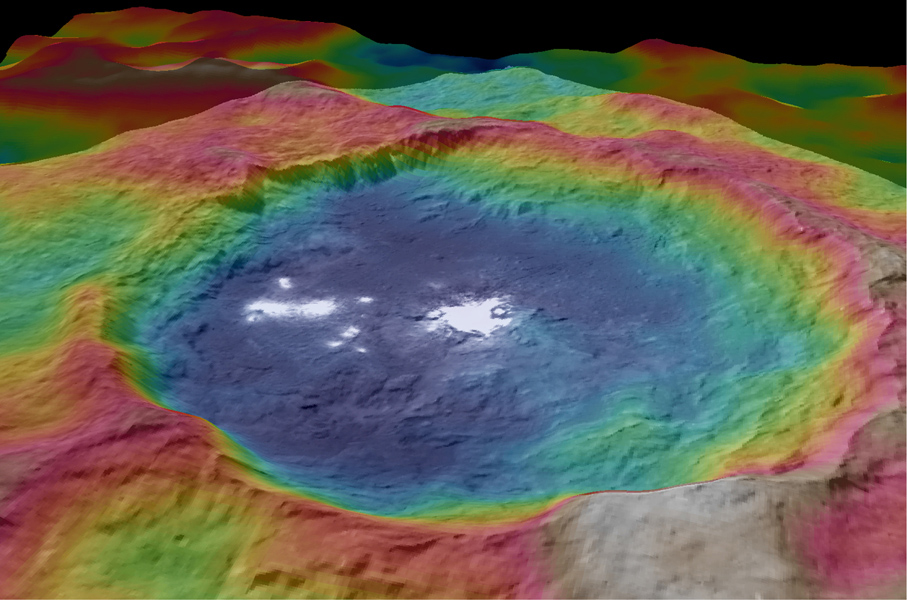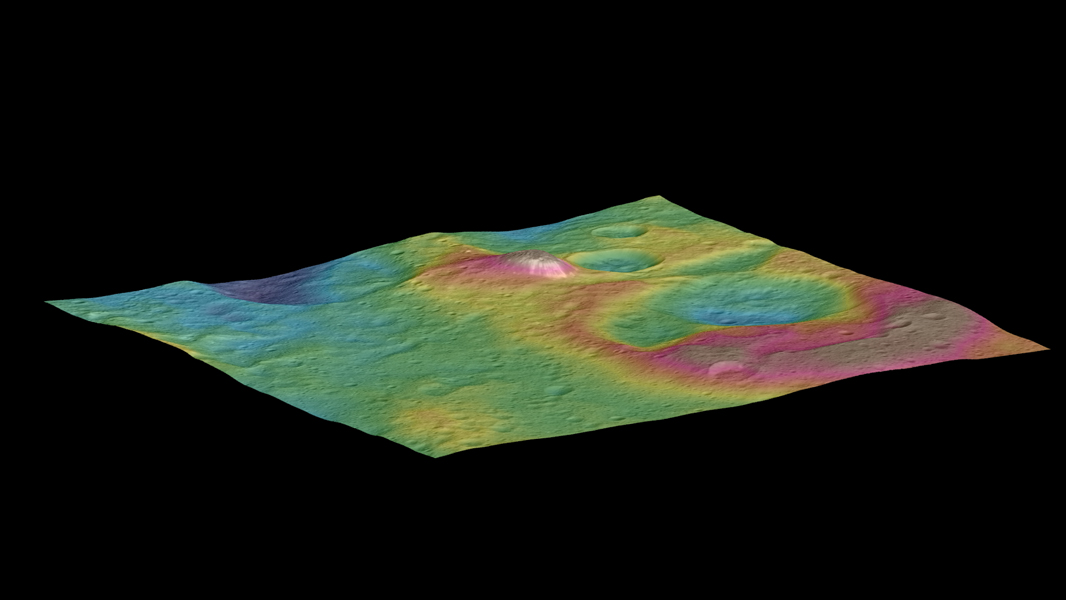New maps uncover amazing geological features on Ceres

A series of new images of Ceres have been provided by NASA's Dawn spacecraft, showing the geological features of the dwarf planet in amazing, unprecedented details.
A new colored topographic map shows numerous recently approved names for various geological features on the dwarf planet, such as Jaja, the Abkhazian harvest goddess or Ernutet feature, named after the cobra-headed Egyptian harvest goddess.

This map-projected view of Ceres was created from images taken by NASA's Dawn spacecraft during its high-altitude mapping orbit, in August and September, 2015. Image credit: NASA/JPL-Caltech/UCLA/MPS/DLR/IDA
"Ceres continues to amaze, yet puzzle us, as we examine our multitude of images, spectra and now energetic particle bursts," said Chris Russell, Dawn principal investigator at the University of California, Los Angeles.
One other map of Ceres's surface shows compositional variations, even more subtle than those previously know to exist on Vest. Color-coded topographic images of Occator crater, hosting the brightest spots of the dwarf planet, and an image of cone shaped 6 km (4 mile) high mountain have also been provided by the Dawn spacecraft.
.jpg)
This color-coded map from NASA's Dawn mission shows the highs and lows of topography on the surface of dwarf planet Ceres. Image credit: NASA/JPL-Caltech/UCLA/MPS/DLR/IDA
"The irregular shapes of craters on Ceres are especially interesting, resembling craters we see on Saturn's icy moon Rhea. They are very different from the bowl-shaped craters on Vesta," said Carol Raymond, Dawn's deputy principal investigator based at NASA's Jet Propulsion Laboratory, Pasadena, California.
Dawn's gamma ray and neutron spectrometer have detected three bursts of energetic electrons which are thought to have resulted from Ceres's interaction with the radiation coming from sun. This is a very unexpected observation, and the scientists are still trying to figure it out.

This view, made using images taken by NASA's Dawn spacecraft, is a color-coded topographic map of Occator crater on Ceres. Image credit: NASA/JPL-Caltech/UCLA/MPS/DLR/IDA
At present, Dawn is orbiting Ceres at an altitude of 1 470 km (915 miles) and the spacecraft is expected to image its complete surface of the dwarf planet up to six times the mission's current phase.

This view, made using images taken by NASA's Dawn spacecraft, features a tall conical mountain on Ceres. Image credit: NASA/JPL-Caltech/UCLA/MPS/DLR/IDA/PSI
Starting in October and continuing into December, Dawn will descend to its lowest and final orbit, an altitude of 230 miles (375 kilometers). The spacecraft will continue imaging Ceres and taking other data at higher resolutions than ever before at this last orbit. It will remain operational at least through the middle of 2016.
Source: NASA
Featured image credit: NASA/JPL-Caltech/UCLA/MPS/DLR/IDA

Commenting rules and guidelines
We value the thoughts and opinions of our readers and welcome healthy discussions on our website. In order to maintain a respectful and positive community, we ask that all commenters follow these rules:
We reserve the right to remove any comments that violate these rules. By commenting on our website, you agree to abide by these guidelines. Thank you for helping to create a positive and welcoming environment for all.